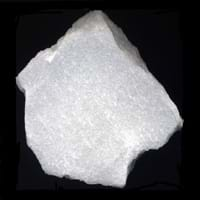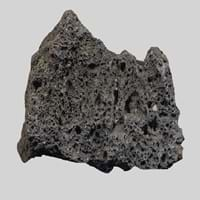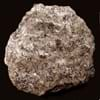Definition
Marble is a non-foliated metamorphic rock which is composed of recrystallized carbonate which is formed when limestone is exposed to high temperatures and pressures over a long time
Scoria is a dark-colored extrusive igneous rock with abundant round bubble-like cavities
Discoverer
Unknown
Unknown
Etymology
From the Greek marmaros, shining stone and also from the English word marmoreal meaning marble-like
From late Middle English (denoting slag from molten metal), from Greek skōria refuse, from skōr dung
Class
Metamorphic Rocks
Igneous Rocks
Sub-Class
Durable Rock, Medium Hardness Rock
Durable Rock, Medium Hardness Rock
Group
Not Applicable
Volcanic
Other Categories
Medium Grained Rock, Opaque Rock
Fine Grained Rock, Opaque Rock
Texture
Granular
Vesicular
Color
Black, Blue, Brown, Grey, Pink, White
Black, Brown, Dark Grey to Black, Red
Durability
Durable
Durable
Scratch Resistant
Yes
Yes
Appearance
Veined and Shiny
Glassy and Vesicular
Interior Uses
Bathrooms, Countertops, Decorative Aggregates, Entryways, Floor Tiles, Homes, Hotels, Interior Decoration, Kitchens, Stair Treads
Decorative Aggregates, Interior Decoration
Exterior Uses
As Building Stone, As Facing Stone, Garden Decoration, Office Buildings, Paving Stone
Garden Decoration, Paving Stone
Other Architectural Uses
Not Yet Used
Curbing
Construction Industry
As Dimension Stone
Cement Manufacture, Construction Aggregate, for Road Aggregate, In landscaping and drainage works
Medical Industry
Not Yet Used
Not Yet Used
Antiquity Uses
Artifacts, Jewellery, Monuments, Sculpture, Small Figurines
Artifacts, Monuments, Sculpture
Commercial Uses
Cemetery Markers, Commemorative Tablets, Creating Artwork, Curling, Laboratory bench tops, Paper Industry, Tombstones, Used in aquariums, Whiting material in toothpaste, paint and paper
As a traction material on snow-covered roads, Creating Artwork, High-temperature insulation, In gas barbecue grills
Types
Breccia Marble, Carrara Marble, Calacatta marble, Cultured Marble, Polished Marble, Honed Marble, Sand Marble
Not Available
Features
Available in Lots of Colors and Patterns, Easily splits into thin plates, Generally rough to touch, Is one of the oldest rock
Available in Lots of Colors and Patterns, Generally rough to touch, Surfaces are often shiny
Archaeological Significance
Famous Monuments
Al Aqsa Mosque in Jerusalem, Buland Darwaza in Agra, India, Capitol Hill Building, Washington DC, Charminar in Hyderabad, India, Chhatrapati Shivaji Terminus in Maharashtra, India, Ephesus in Turkey, Faisal Mosque in Islamabad, Pakistan, Humayun's Tomb in Delhi, India, Jama Masjid in Delhi, India, Lotus Temple in New Delhi, India, Louvre in Paris, France, Mysore Palace in Karnataka, India, Neuschwanstein in Bavaria, Palace of Parliament in Bucharest, Romania, Parthenon in Greece, Potala Palace in Lahasa, Tibet, Prophet’s Mosque in Medina, Qutb Minar in India, Saint Basil's Cathedral in Moscow, Russia, St. Peter’s Cathedral in Vatican City, Taj Mahal in Agra, India, Tower of Pisa, Italy, Victoria Memorial in Kolkata, India, Washington Monument, US
Data Not Available
Famous Sculptures
Ajanta Caves in Maharashtra, India, Bust of Artemis, Elephanta Caves in Maharashtra, India, Lincoln Memorial in America
Data Not Available
Formation
Marble is a metamorphic rock produced from limestone in the earth crust. It is formed by the metamorphism of limestone.
Scoria forms when magma containing huge amount of dissolved gas flows from a volcano during an eruption.
Mineral Content
Garnet, Graphite, Olivine, Pyrite, Quartz
Apatite, Biotite, Calcite, Feldspar, Hematite, Hornblade, Ilmenite, Magnetite, Olivine, Pyroxene, Quartz, Silica
Compound Content
CaO, Iron(III) Oxide, FeO, MgO, Silicon Dioxide
Ca, NaCl
Types of Metamorphism
Impact Metamorphism
Burial Metamorphism, Cataclastic Metamorphism, Contact Metamorphism
Types of Weathering
Biological Weathering, Chemical Weathering, Mechanical Weathering
Biological Weathering, Chemical Weathering, Mechanical Weathering
Types of Erosion
Chemical Erosion, Coastal Erosion
Chemical Erosion, Coastal Erosion, Glacier Erosion
Grain Size
Medium Grained
Fine Grained
Fracture
Not Available
Conchoidal
Porosity
Less Porous
Highly Porous
Luster
Dull to Pearly to Subvitreous
Subvitreous to Dull
Compressive Strength
Not Available
Toughness
Not Available
2.1
Specific Gravity
2.86-2.87
Not Available
Transparency
Opaque
Opaque
Density
2.4-2.7 g/cm3
Not Available
Specific Heat Capacity
Not Available
Resistance
Heat Resistant
Heat Resistant, Impact Resistant, Pressure Resistant, Wear Resistant
Deposits in Eastern Continents
Asia
China, India
Afghanistan, Indonesia, Japan, Russia
Africa
Namibia
Ethiopia, Kenya, Tanzania
Europe
Italy, Spain
Greece, Hungary, Iceland, Italy, Turkey
Others
Not Yet Found
Not Yet Found
Deposits in Western Continents
North America
Not Yet Found
Bahamas, Barbados, Canada, Costa Rica, Cuba, Jamaica, Mexico, USA
South America
Not Yet Found
Argentina, Chile, Ecuador, Peru
Deposits in Oceania Continent
Australia
New South Wales, New Zealand, Queensland, Victoria
New Zealand, Western Australia









